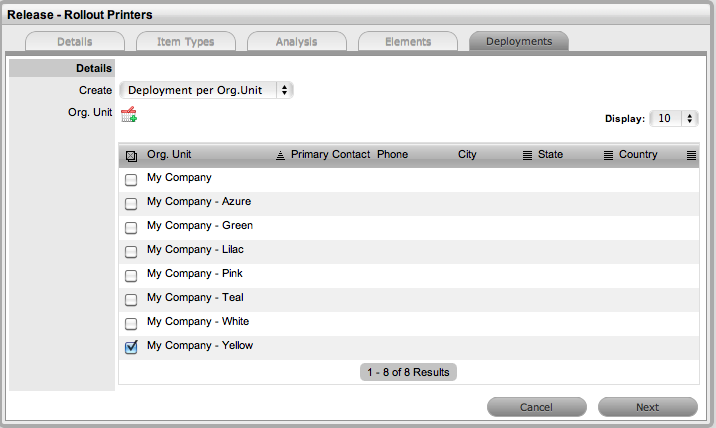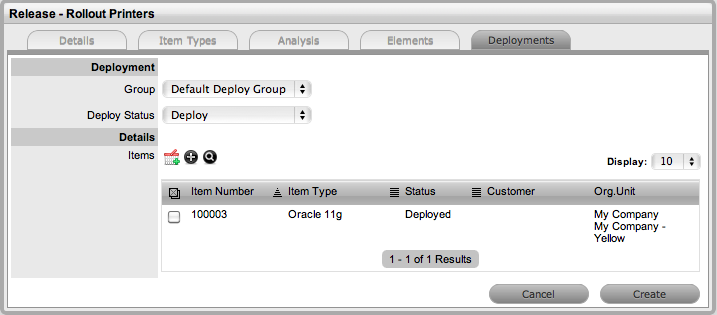Set the Deployment Type option:
Options |
Description |
Deployment per Customer |
Allows specific Customers and Items to be assigned to the Deployment. By selecting this option Customer Names are displayed for Customers that own Items derived from Item Types associated with the Release. Use the Search Options field to find a specific Customer.
Use this option if an Item being created, updated or replaced is to be owned by the Customer directly. |
Deployment per Org. Unit |
Allows Organizational Units to be assigned to the Deployment for the Release. Selecting this option displays Org Units configured in the system.
Use this option for Items that are created, updated or replaced as part of the Deployment, which are shared by all Org. Units included in the Deployment or are assigned ownership on a per Org. Unit basis.
|
Global Deployment |
Sets the Workflow that includes the relevant stages to manage the Release. Selecting this option creates the Deployment for the entire customer base and displays the Next button. |
Tick the relevant Deployment
targets in the list, for Customer or Org. Unit Deployments

Click ![]()
The selections are added to the Deployment.
Click Next
The screen allows the Manager to define the Group of Technicians who
will action the Deployment Tasks of the Release, and the State of
the Deployment Workflow in which the tasks are to be worked upon.
The Items Field will also display any Items associated with the Customer
or Org Unit for Update or Replace Item Type Releases.

Set the Group
of Technicians who will undertake the Deployment Tasks
The list is derived from the Groups tab of a Release Team.
Set the Workflow
State that the Deployment Tasks move to Open and can be worked on
by Technicians
This list is derived from Release Workflow that have Deployment State
option set to Yes.
For Update
& Replace Item Releases, select one, multiple or all Items
displayed in the Items List or use ![]() to search
for Items
to search
for Items
Click ![]() once the Items have been identified
once the Items have been identified
The Items will be listed in a Selected Items sidebar.
For New
Item Releases, click ![]()
The screen defaults to the New Types list.
Select the Item Type for the Deployment
Set the Item
Ownership Status

Click Create
The Selected Item box displays the New Item to be created. Continue
to create Deployment Tasks, if relevant or click Create to lodge the
Deployment in the system.
Click Done when
all Deployment Tasks have been created.
The Deployments will be listed within the Change>Deployments tab.